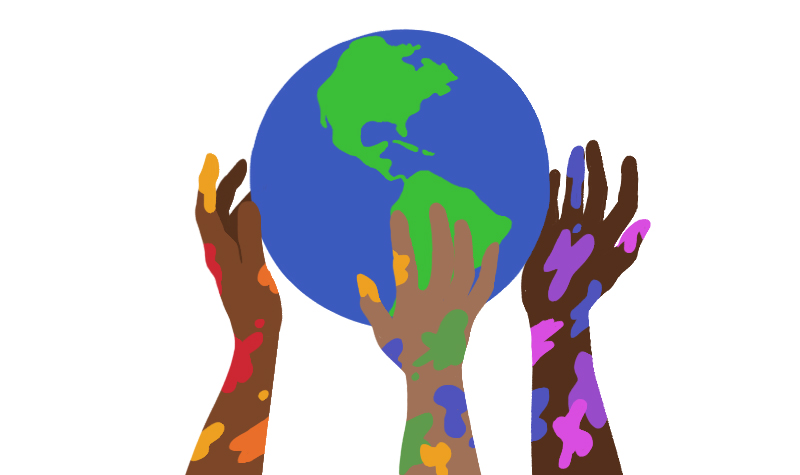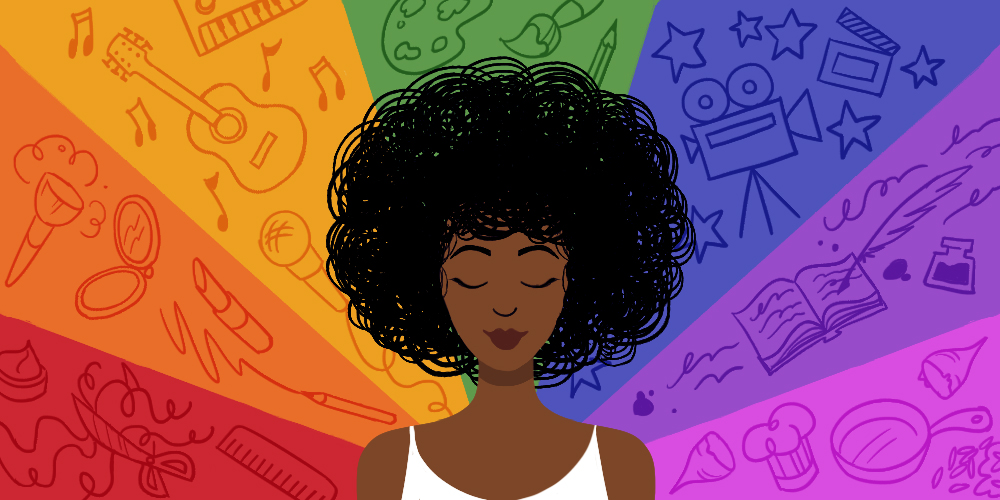Recently, a friend’s husband told me about a time when he booked a gig to appear in a national television commercial. Prudently, he made sure to get a fresh haircut and line up beforehand, predicting that whoever was working in hair and makeup on set would be ill-equipped to handle his thick 4c curl pattern. He surmised correctly; the white woman veteran hair stylist asked him if he had one of those “curl brush things” and instructed him to both style his own hair, and to my personal horror, shave his own face moments before going on the air. He complied, and afterward, when several people on set complimented his look, the stylist piped up and accepted the compliments on his behalf, as if she hadn’t completely abandoned him to provide his own aesthetic services. My friend’s husband laughed bitterly after finishing the anecdote, adding:
“And of course, there isn’t a Black stylist who would be let within 100 feet of a TV set without knowing how to cut a white guy’s hair or trim his beard!”
I know better than to ask these sorts of questions, but I couldn’t stop myself:
“Did you say anything to her?”
My friend’s husband looked flummoxed, annoyance and resignation flashing across his face,
“Of course not. You know how it is with these things.”
And I did know. His story feels emblematic of Janelle Monae’s line, “Add us to the equation but they never make us equal.” He was commissioned for the gig, but he was responsible for his own accommodations. The feeling that the story left me with was viscerally familiar; nearly identical to the one I had when listening to another friend’s recounting of her recent tattoo experience. She had flown to Ireland for a 3-day, intensive tattoo session with her favorite artist after years of following her work, waiting patiently for the day when she could finally afford her own coveted piece. When I asked to see it, she looked away in shame. The tattoo, which spanned nearly the full length of her external bicep and shoulder, was a muddled mess of hyper-saturated shading and colors, seemingly etched haphazardly atop her rich, dark complexion.
“It’s okay,” she managed after a beat. “I’ll get it lasered off.”
This phenomenon, while somewhat quotidian in the lives of Black folks, bears acknowledgment. It is symptomatic of an unsavory truth that seems to permeate every sector of the arts: white people are fully allowed to consider themselves experts in their craft, even if that expertise falls flat the moment a Black person enters the equation. It seems in the minds of white artists, and perhaps the broader society, there is art, and then there is Black art — the latter category is ubiquitously understood to be a subgenre; nonessential to mainstream metrics of high art and skilled cultural production. Black folks are taught from a young age that our art, aesthetics, food, language, and even our embodiment of personhood is niche. To thrive, we must become experts in what white people find useful, enchanting, and worthy. Inversely, (white) art is measured solely by its merits within the white gaze; it is good art if it adequately captures and reinforces the beauty of white people.
Psychologist Beverly Daniel Tatum explains these discriminatory metrics by asserting that white people have minimal knowledge of Black people’s experiences, and their access to that information is often limited to stereotypes. Meanwhile, Black people are culturally saturated in the life and times of white people through media, education, and literature.
Artistic expressions and visual renderings of white standards and desires abound. What is the ratio of white and Black art in the Louvre? The MOMA? Even mainstream children’s picture books did not feature Black main characters until 1963 when Ezra Jack Keats, a white man, introduced Peter in The Snowy Day. This is how many years of Black people learning from and subsisting within a white-as-default visual narrative? Yet, somehow, Black artists still don’t have enough years of study to qualify as experts.
Further, Tatum argues, Black people must “become highly attuned” to white cultural norms as a form of self-protection. In the professional sphere, this attunement is necessary for Black people to acquire and keep their jobs. In this implicit condition of capitalism, white people seem to benefit dichotomously — they experience the joy of being focal to the production and consumption of “white art” at large, and too, take pleasure in seeking and consuming Black art through appropriation.
Growing up, it seemed like a rite of passage for the white girls in my classes to take a spring break trip to the Caribbean, returning with their hair neatly fashioned into a style akin to cornrows. I still remember the specific anger I felt — like someone had looked over my shoulder and cheated off my test — as their braided hair swung about, the beads at the end of their braids clicking songfully for weeks. It was the same anger that I felt on picture day in school when the photographer would hand me a small, fine-tooth comb, and then shrug in bewilderment when neither of us knew what use it would be for me. When I got the portraits back, even though my complexion was inevitably overexposed in some areas and shrouded in shadows in others, my face still crumpled when my parents opted not to pay for copies of the photos.
And it isn’t just that white people don’t know how to include Black people in their artistry that incenses me, it’s also that Black folks simply aren’t given the opportunity to showcase their skills. Despite a lifelong apprenticeship in the aesthetic notes of whiteness, Black people still enter professional spaces with a “deficit of credibility.” Sociologist Elijah Anderson explains how, after an arbitrary assessment, white gatekeepers may permit a Black person to proceed from a deficit “to a provisional status, suggesting a conditional ‘pass,’ with the person having something ‘more to prove.'” On this note, the old adage that Black people must be twice as good as white people to access and remain in any particular competitive arena, feels inaccurate — according to Anderson, we must be three times as good to move merely from deficient, to provisional to qualified.
The multi-talents of Black artists are rarely recognized as nuanced, nor are they celebrated for their transcendence or applauded for the ways that their art bridges cultures. Take for example the case of Tracy Chapman’s “Fast Car.”
Despite the work that song did to make country music feel accessible to Black people, it took Luke Combs, a white artist, to cover the song and 35 years before it was given its due recognition, winning ‘Song of the Year’ at the CMA’s. Still, it was not Chapman’s voice on the version that won.
Rather, when critically acclaimed and deemed a preference even, talents become transgressive. Black art becomes an excess: too Black, too graphic, too “other.” It is clear that in artistry, across all sectors, an overhaul is needed; removing whiteness-as-default metrics of expertise is necessary for large-scale cultural advancement. However, I think there is another obvious, more proximal solution available: hire Black artists.
Black creatives who, for years, have been relegated to niche markets and had their work siphoned off their platforms, repackaged by white artists, stylists, and designers have proven time and time again that if they’re given the chance, their craft, and creativity is unstoppable. Art humanizes a culture by making visible and tangible the complicated undertones and beautiful nuances of a people. Art made by, for, and in celebration of Black people captures the collective consciousness and communicates the myriad struggles that bond us.

Recently, I commissioned a makeup artist for a surprise birthday shoot on a dear friend’s birthday. I called five or six places to get quotes for their rates, but the chilliness of one particular response stuck with me. I inquired if any of the makeup artists on staff were women of color, or had any familiarity with doing Black women’s makeup, the voice on the other end of the line was terse and dismissive:
“Why should that matter? No, there are no people of color who work here, but I’m sure I could do anyone’s makeup.”
I thanked them for their time but ended the call quickly. “I’ll just search through social hashtags for local Black makeup artists,” I thought to myself. And I did. I felt proud of my decision to both support Black business, and turn down the opportunity to pay premium prices to a person who’d seemed annoyed — indignant even, by my need to inquire about cultural competency and inclusion. It’s a green one, but I still maintain a hope that one day, this makeup artist will humbly recognize the importance of an intentional shift in their orientation to clients of color. Art will serve to accurately reflect the beauty of our eclectic, ever-changing world. In the meantime, as actress Issa Rae once famously declared, I will continue rooting for everybody Black.•




